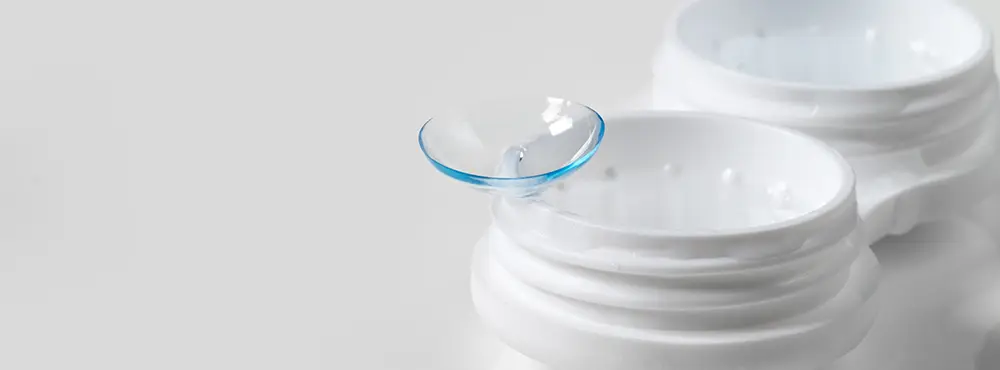1. Injection moulding
The most cost-efficient and popular method used to manufacture soft contact lenses in bulk quantities is injection moulding. This method is widely used for plastic-based products such as toys. In the production of contact lenses, the lens material is heated to the point of melting. The liquid lens material is then injected into a pre-cut mould. The material solidifies to the shape of the mould once the lens material dries. The lens will be polished, then inspected to check its standard of quality. This particular process lacks the precision required to make hard and gas permeable lenses, hence, it’s only used for soft contact lenses.
2. Lathe cutting
Lathe cutting is used to manufacture both hard and soft lenses. It is however, the only way to manufacture rigid gas permeable lenses. Lens cutting uses a technique that puts the lens material on a rotating mount (similar to a miniature potter’s wheel), whilst a machine severs and sculpts away excess lens material to shape a perfectly cut lens. Although this process maintains a greater level of symmetry and lens accuracy, it requires a more complex degree of technology, time and resources in comparison to injection moulding. It does, however, mean that it is ideal for more complicated lens shapes and RGP contact lenses.
3. Cast moulding
Other methods of producing contact lenses include cast moulding. This produces high quality lenses at a lower cost than all the other processes. Cast moulding produces lenses with consistent edges and a smoother surface that can be mass produced. Spin casting produces thinner lenses through mass production but a lot more waste from this process.
4. The finishing process
The final stage once a contact lens has been cut is quality control and packaging. As contact lenses are considered medical devices, this is significantly important part of the contact lens manufacturing process for the safety of wearers.
During the quality control inspection of contact lenses, the lenses are placed under high power magnification to check for irregularities. Shadow graphing is used to measure the curvature and diameter of the lens. The shadow of the lens is shown on a screen and any faults in the lens shape appear in the shadow.
5. Packaging contact lenses after they are made
After quality control and the contact lenses have been inspected, they are ready for packaging. Lenses are generally either packaged in a glass vial, or plastic and foil vacuumed blister pack. The vial or blister will be filled with saline solution, a similar consistency to human tears. The hydrophilic material of the contact lens soaks up the saline solution. As the lens in now packaged and sterile, it is now ready for wear. There will be expiration date on the lens package indicates the last month and year that the container should be considered free from contamination and the lenses inside safe to wear. It is not unusual for the expiration date of a soft contact lens to be four years from the date the lens was manufactured and packaged. Generally, the expiration date on contact lens packaging is written in a yyyy/mm format. For example, an expiration date of 2024/08 means the lenses should be considered safe for wear until the end of August 2024.
Disclaimer: The advice in this article is for informational purposes only and does not replace medical care or an in-person check-up. Please check with an eyecare professional before purchasing any products or remedies. For information on our article review process, please refer to our Editorial Policy.

 Offers
Offers Account
Account
 Favorite
Favorite
 Basket
Basket

 OFFERS
OFFERS
















